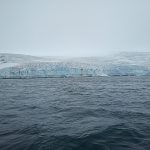jmelero
- December 20, 2018
- jmelero
Tapping into wind and solar and other green energy technologies, the U.S. can produce 80 percent of its electricity from renewable sources by 2050, compared
- December 19, 2018
- jmelero
Bronzeville, the South Side home of Chicago’s Black Renaissance and the birthplace of Black History Month, hopes to launch its next Golden Age with support
- December 18, 2018
- jmelero
The Greenland ice sheet is more than three times the size of Texas, 2 miles deep at its thickest point. And it’s melting.
Not only is
- November 15, 2018
- jmelero
Climate change is rapidly taking the world as we know it into uncharted territory. What we do next and how quickly we do it can
Categories
Latest Articles
February 1, 2024
Contact Information
Abigail Foerstner, Managing Editor and Medill Associate Professor




